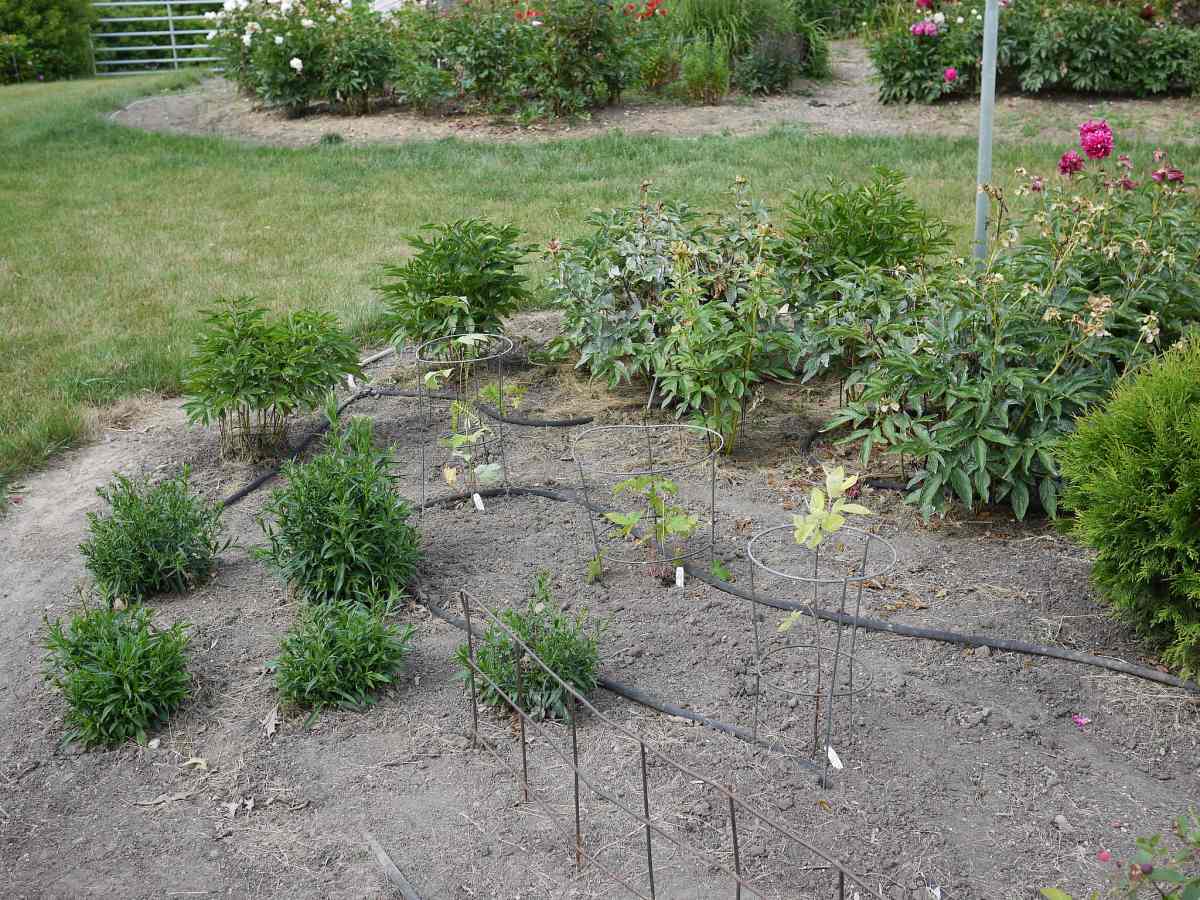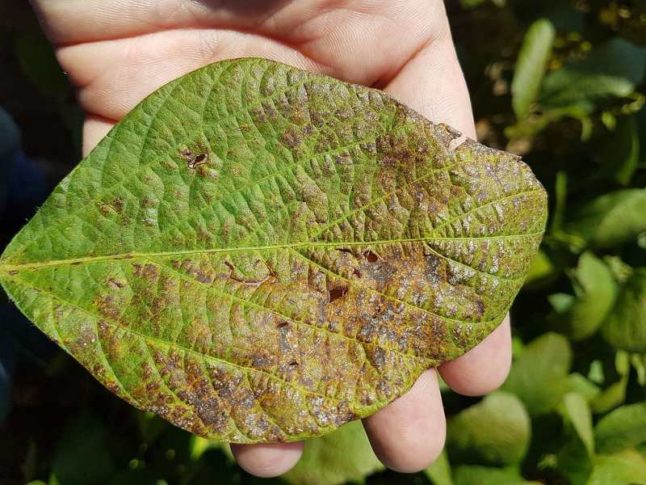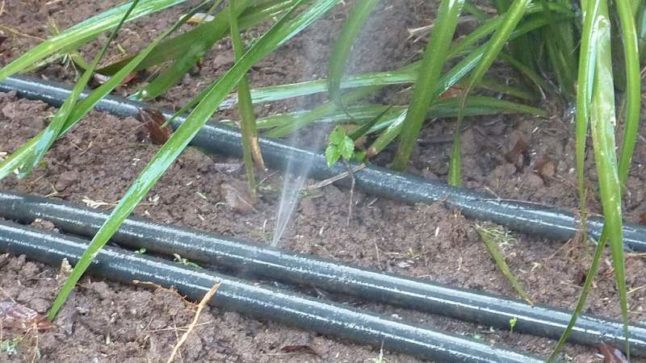
Drip irrigation is a labor-saving, money-saving and environmentally friendly way to water plants in your garden. This article looks at the pros and cons of a drip irrigation system to help you decide what’s best for your landscape.
What is Drip Irrigation?
Drip irrigation is a system of tubes, drip lines, and emitters that delivers water slowly to the root zones of plants so that it can penetrate the soil deeply. The root zone is where plants need water most rather than having it sprinkled overhead.
Plants can be watered with above ground drips, below ground drips, above ground misters and bubblers, and by seeping hoses.
Pros of Drip Irrigation Systems
Water conservation and efficiency are probably the two greatest advantages of a drip irrigation system in the landscape. Drip irrigation systems reduce water loss through evaporation, also. Let’s take a closer look at a drip irrigation system’s advantages.
Convenient and Efficient
A drip irrigation system takes the guesswork out of watering your plants because it is programmed to do the job efficiently. The homeowner does not have to turn the system on and off. Timers and sensors will be set by the installer or homeowner. These devices control when the system comes on, how long it runs, then shuts it off.
Prevents Wasted Resource
Drip systems prevent the wasting of water, a valuable resource. The drip system delivers water at or near the plant’s root zone, where it does the most good. On the other hand, water is lost through evaporation when sprayed from a sprinkler or garden hose.
Drip irrigation systems also use less water, distributing 1 to 4 gallons of water per hour (gph). A sprinkler system delivers 12 to 30 gallons of water per minute.
Reduces Soil Erosion
Since a drip irrigation system delivers water under low pressure, there’s less chance of soil erosion, root exposure, and water runoff. The slow distribution allows the soil to absorb the water. Water that gushes from a garden hose can easily loosen and dislodge soil.
Reduces Leaf Diseases

Because a drip irrigation system targets the root area of a plant, the leaves do not get wet. Wet leaves can contribute to diseases, including fungus.
Versatile and Easy to Modify
Advantages of a drip irrigation system are that it can be configured in many shapes and sizes. It can be modified to serve specific plants, such as shrubs, which have different water requirements than perennials or lawns. The system can also be extended or reduced, as the landscape matures, or water requirements change.
Increases Plant Productivity
Regular watering of plants increases their ability to bloom and form fruit and vegetables. Adequate soil moisture also aids in seed germination. Because the system works automatically, water is delivered directly to plants to support their growth and productivity. Despite good intentions, watering with the hose can be a hit or miss activity.
Reduces Energy Costs
When you opt for a drip irrigation system, less energy is spent pumping the water at a low pressure. As a result, your energy bills have the potential to lower.
Inhibits Weed Growth
Because the water flows directly to the root zones of desirable plants, weeds will be left out of the stream. The lack of water should help reduce and eliminate weeds.
Cons of Drip Irrigation Systems
Just like most things in life, drip irrigation systems are not perfect. Let’s explore some of the disadvantages of drip irrigation in the landscape.
Expense
Drip irrigation systems can be expensive to install, especially when compared with common lawn sprinkler irrigation. That’s because of the intricacies, including size of tubing, regulators, water quality, water pressure, timers, sensors, distance from pump, and spacing of emitters.
Clogged Emitters
The quality of your water is important to know. If you have hard water, salinity, or water with a lot of calcium, using a drip irrigation system is probably not feasible, even with filters. Hard water clogs the drip emitters. Be sure to discuss this with the company performing the installation.
Damage From Garden Chemicals and Weather
Fertilizers, weed killers, and other lawn and garden chemicals can damage the tubing, causing it to break down. The sun can cause the tubing to crack. Covering the tubing with mulch can help prevent these issues.
Rodents Equal Leaks
Rodents, including squirrels and field mice, are not picky when it comes to chewing a plant’s roots, tree bark, or drip irrigation tubing. Dogs or other animals also may take bites out of the tubing while getting a drink. Either way, leaks may occur with a drip irrigation system.
Damage From Garden Equipment

Lawn mowers, weed whackers, shovels and other landscape equipment can crack tubing or break emitters, causing leaks in the landscape.
Tripping Hazard
A drip irrigation system that runs along the soil surface can cause people and pets to trip. Tripping might crack the tubing or break emitters, causing leaks.
Spacing Issues
If emitters are placed too close together, they may crowd root development or distribute too much water to the area.
Maintenance
Keeping the drip irrigation system running efficiently will require your attention. In part, that means making sure the filters, emitters and tubes are not clogged and are operating at the appropriate flow rate.
FAQ About Drip Irrigation Systems
No. You can have it installed in sections.
Yes, if the system has a rain sensor. The sensor communicates with the timer to skip a cycle or turn it off.
It’s best not to drink irrigation water from the system because it may be running through tubes that carry traces of chemicals. The system’s directions should state hazards.
When to call the pros
For most people, it’s best to work with a local landscaping expert. That person can have the whole landscape’s needs in mind, especially when designing the plan in sections or zones for your garden. Understanding the size and scope of the project aids in specifying the correct dimensions of tubing, pump power, and other aspects of the system. The pro also will be able to measure water pressure to ensure there’s adequate water supply for a drip irrigation system.
Main Photo Credit: F. D. Richards / Flickr / CC BY-SA 2.0